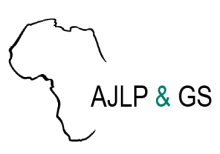Land Library
Welcome to the Land Portal Library. Explore our vast collection of open-access resources (over 74,000) including reports, journal articles, research papers, peer-reviewed publications, legal documents, videos and much more.
/ library resources
Showing items 1 through 9 of 233.Context and backgroundMultidimensional Poverty (MP) considers poverty in multiple dimensions of deprivations such as health, education, energy, the standard of living and access to basic services. MP remains a major challenge in Africa, with a large proportion of the population living in MP.
Youth transition in the common bean ( Phaseolus vulgaris L.) value chain remains low in Ghana and Cameroon despite the potential of the bean sub-sector in reducing poverty, unemployment, and undernutrition. This study compared youth transition in the bean value chain in Ghana and Cameroon.
Context and backgroundThe intensive use of land is regarded as the major source of agricultural growth in many developing nations, even though this intensive usage has been seen as one of the most substantial human impacts on the global environment.
Context and Background:The Government of the Republic of Zambia has strengthened the policy and legal frameworks to support gender equality and women's empowerment.
AbstractContext and background:The Sagara hills provide key ecosystem services to the communities in Kongwa and Mpwapwa districts in Dodoma region. In particular, the hills provide watershed services which is vital in a challenging semi-arid condition.
Agriculture is key to economic growth and poverty reduction in Kenya as it plays a pivotal role in employment creation, food security, exports, and sustainable development.
In recent years, a growing literature has examined the potential of multifaceted, intensive “graduation model†interventions that simultaneously address multiple barriers constraining households’ exit from poverty.
This study examined the determinants and impacts of mobile money (MM) usage on maize productivity and poverty likelihood (i.e., the probability of a household falling below the international poverty line at USD 1.9 per capita per day) in the Mbeya Region, Tanzania.



